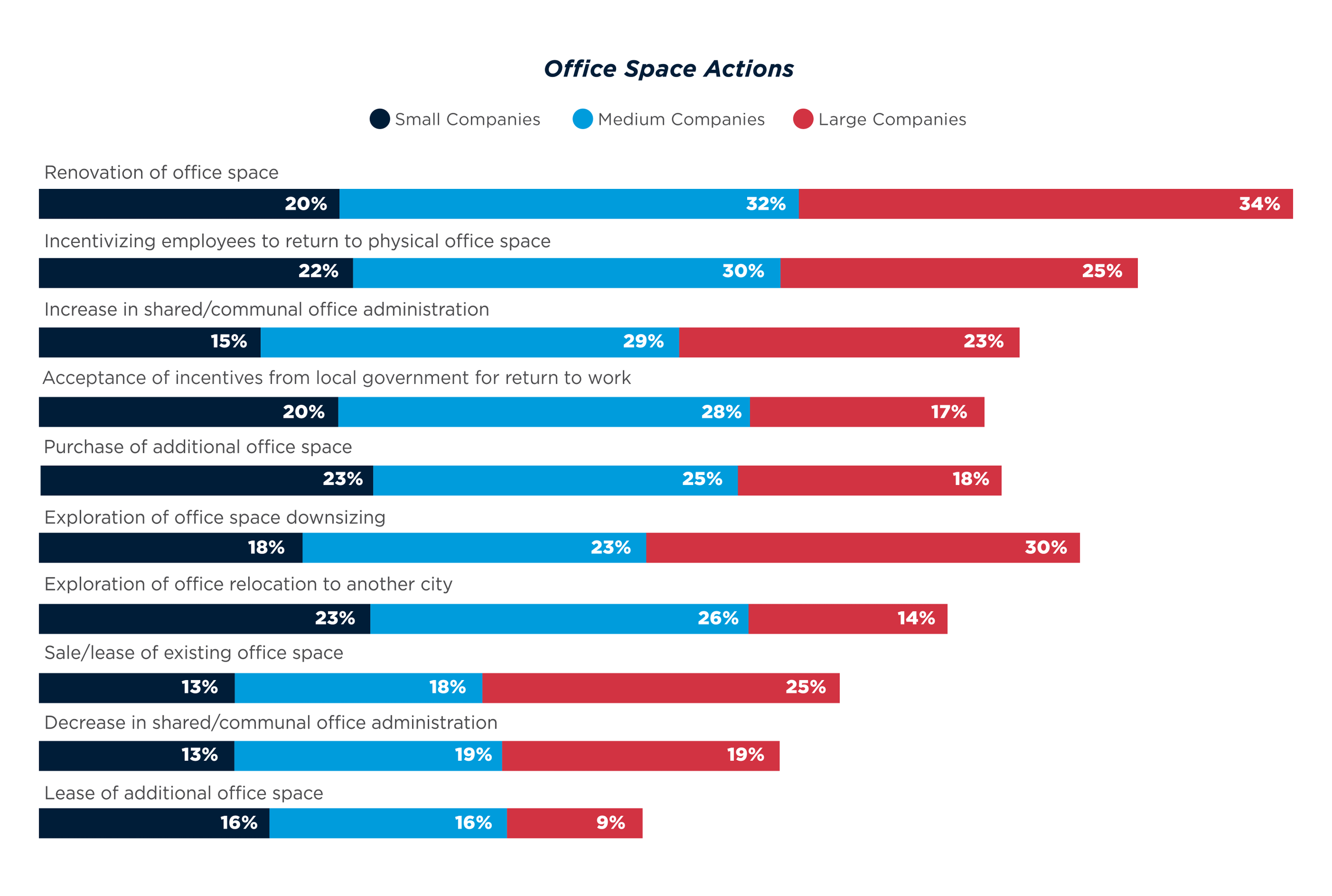EMPLOYEE MOBILITY AND CHANGING WORKPLACES
Though 40% of companies reported an increase in employees declining relocation in 2023 compared to 2022, companies are noting an increase overall in expectations of employees electing permanent voluntary relocations.
44% of employers are expecting an increase in permanent voluntary relocations in 2024 compared to 2023. This is up from the year prior when 39% of employers anticipated an increase in 2023 compared to 2022. The increases in expected moves vary considerably by company size. Large and medium companies are predicting a 6-point increase in voluntary permanent moves compared to last year. Most small companies (53%) expect the same number of permanent voluntary moves.
Remote work constraints vary by company size with the top three overall remote work constraints:
When it comes to actions taken within the office space, 30% of respondents note renovating, 28% note offering incentives to employees to return to the office such as free lunch, and 26% note increasing shared/communal space in the office. The predominant actions vary by company size with large companies noting renovations (34%) or exploring office downsizing (30%), medium companies noting renovations (32%) or incentivizing employees to return (30%), and small companies noting exploration of the office relocating to another city (23%) or purchase of additional office space (23%).
Voluntary Relocations
Employees are choosing to relocate for personal reasons, and with ongoing flexibility in workplace policies, this continues to increase. People are choosing to move voluntarily for a variety of reasons, but one key reason that data is supporting includes the desire for low-tax states. According to a study that analyzed U.S. Census Bureau data from July 2022 to July 2023, there are correlations that show Americans are leaving high-tax, high-cost-of-living states for states with lower tax and better tax structures (Tax Foundation).44% of employers are expecting an increase in permanent voluntary relocations in 2024 compared to 2023. This is up from the year prior when 39% of employers anticipated an increase in 2023 compared to 2022. The increases in expected moves vary considerably by company size. Large and medium companies are predicting a 6-point increase in voluntary permanent moves compared to last year. Most small companies (53%) expect the same number of permanent voluntary moves.
- In 2024, 44% of companies expect an increase in permanent voluntary relocations, 45% are expecting the same, and 7% are expecting to see a decrease.
- For temporary voluntary relocations, 35% expect an increase, 46% are expecting the same, and 10% are expecting a decrease.
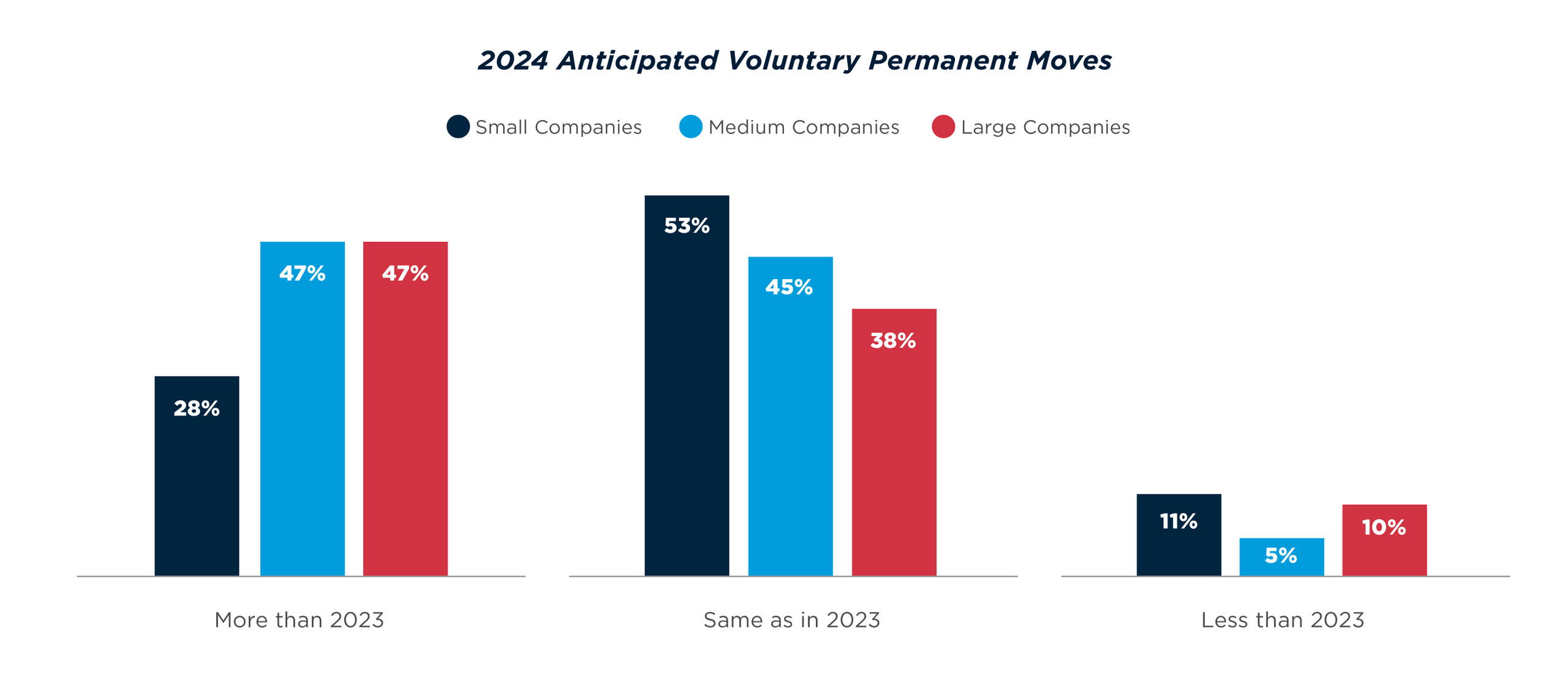
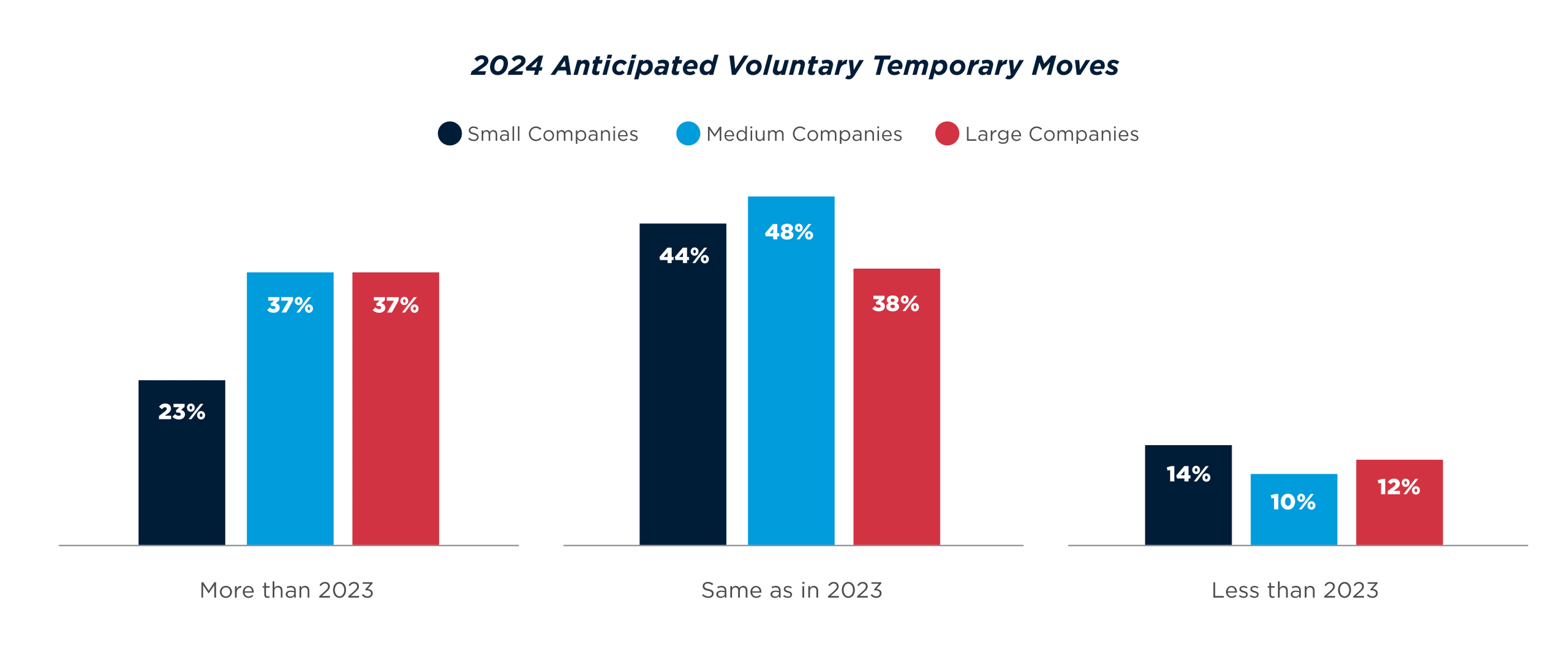
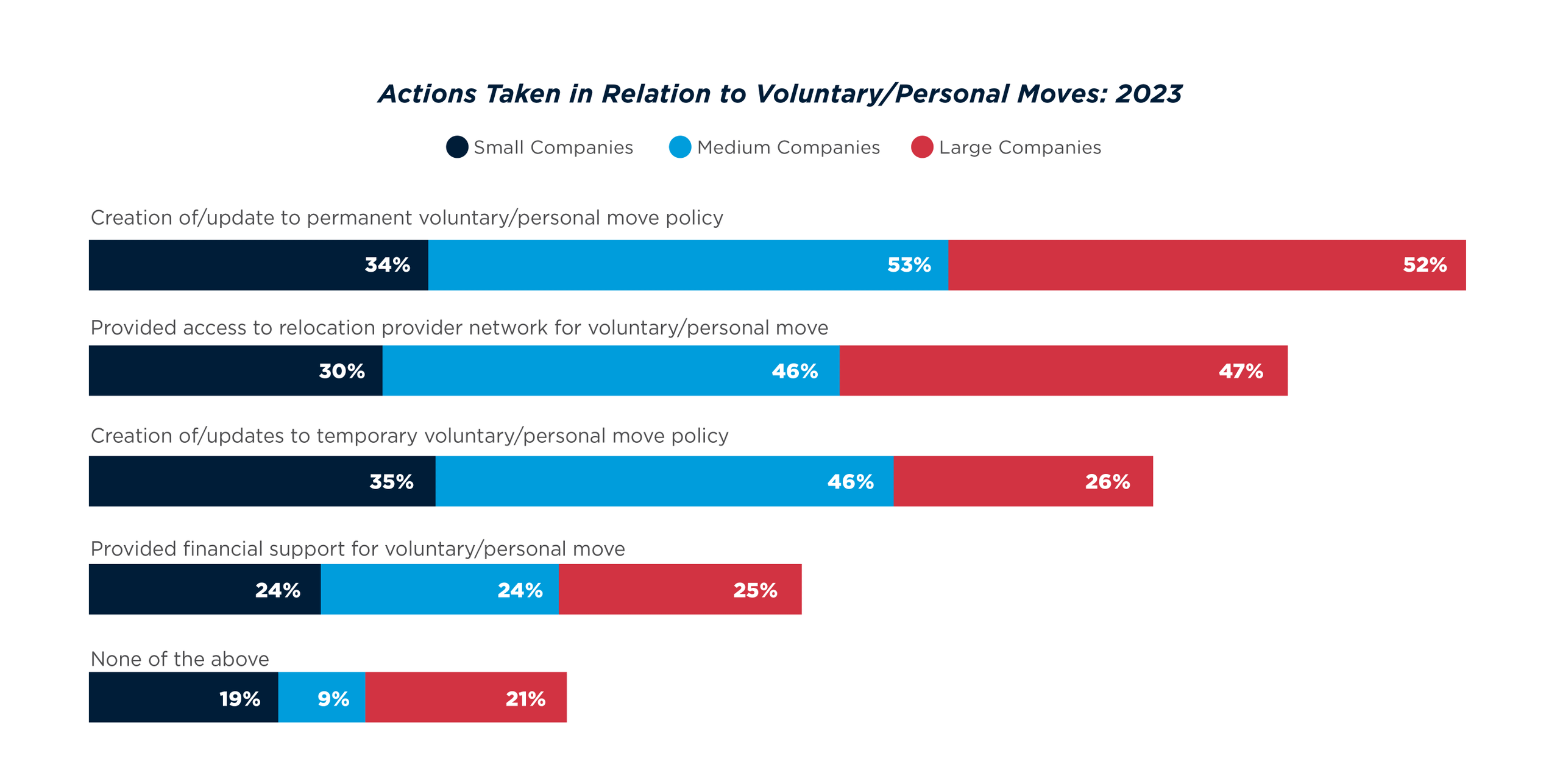
Changing Workplaces
Workplace models continue to adapt since the pandemic. When looking at workplace management policies for 2024, over half (55%) of companies are planning to use the hybrid model, the same amount as 2023. For others, 53% plan to be in the office full time, up from 48% in 2023. 39% will allow specific areas of the company to remain remote, while others must return to the office. 28% will allow employees the option to choose to work remotely or return to the office, and 10% plan to be fully remote. For this report, respondents were instructed to select all models that applied to their plans for 2024.- Medium and large companies were much more likely to embrace the hybrid-work model at 56% and 66% respectively, while small companies were most likely to embrace a full on-site return at 57%.
- Small companies seem to have taken steps to get more people on premises for the coming year with an 8-point increase in companies noting a full on-site return to the office and a drop in all other accommodation options compared to last year.
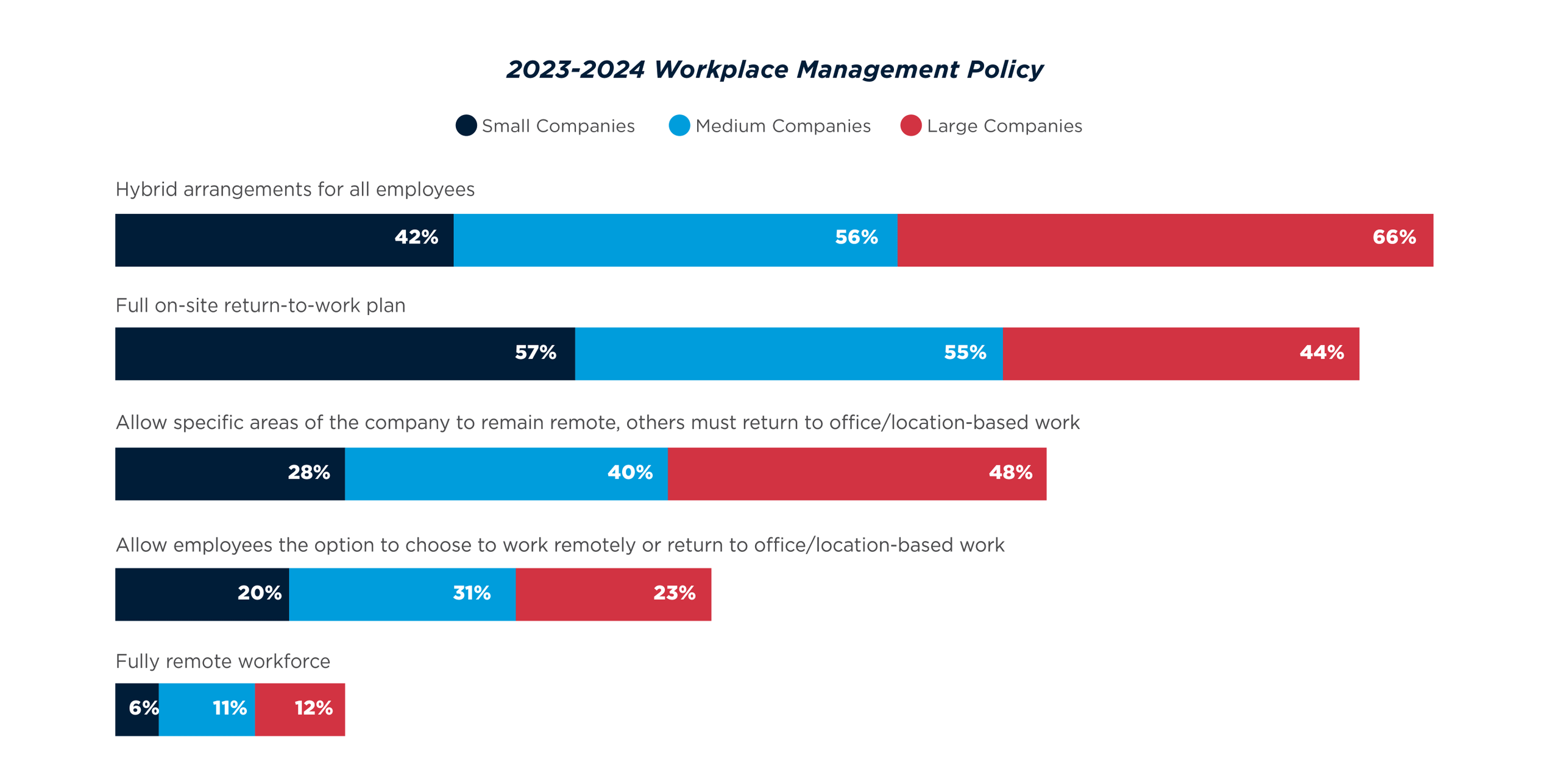
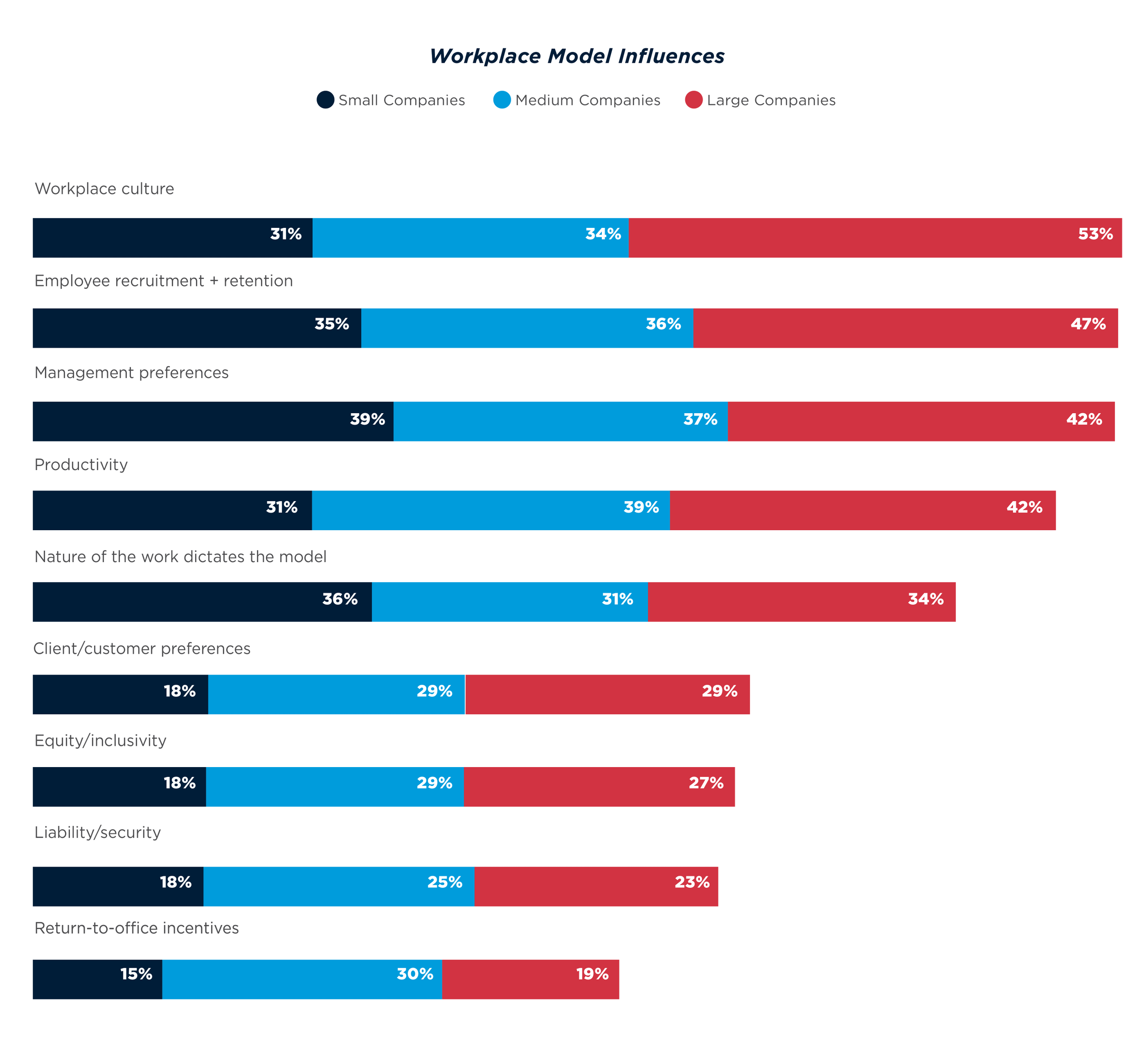
Hybrid/Remote Workforce
According to a Pew Research Center 2023 survey, fully remote work has decreased compared to 2022 from 43% to 35%, while hybrid work has increased from 35% to 41% overall for U.S. adults who can do their job remotely. In our survey, the number of companies offering a hybrid model remained static year-over-year at 55%.Remote work constraints vary by company size with the top three overall remote work constraints:
- 37% - Location must be approved by management
- 36% - Technology requirements
- 35% - Availability at certain hours regardless of time zone
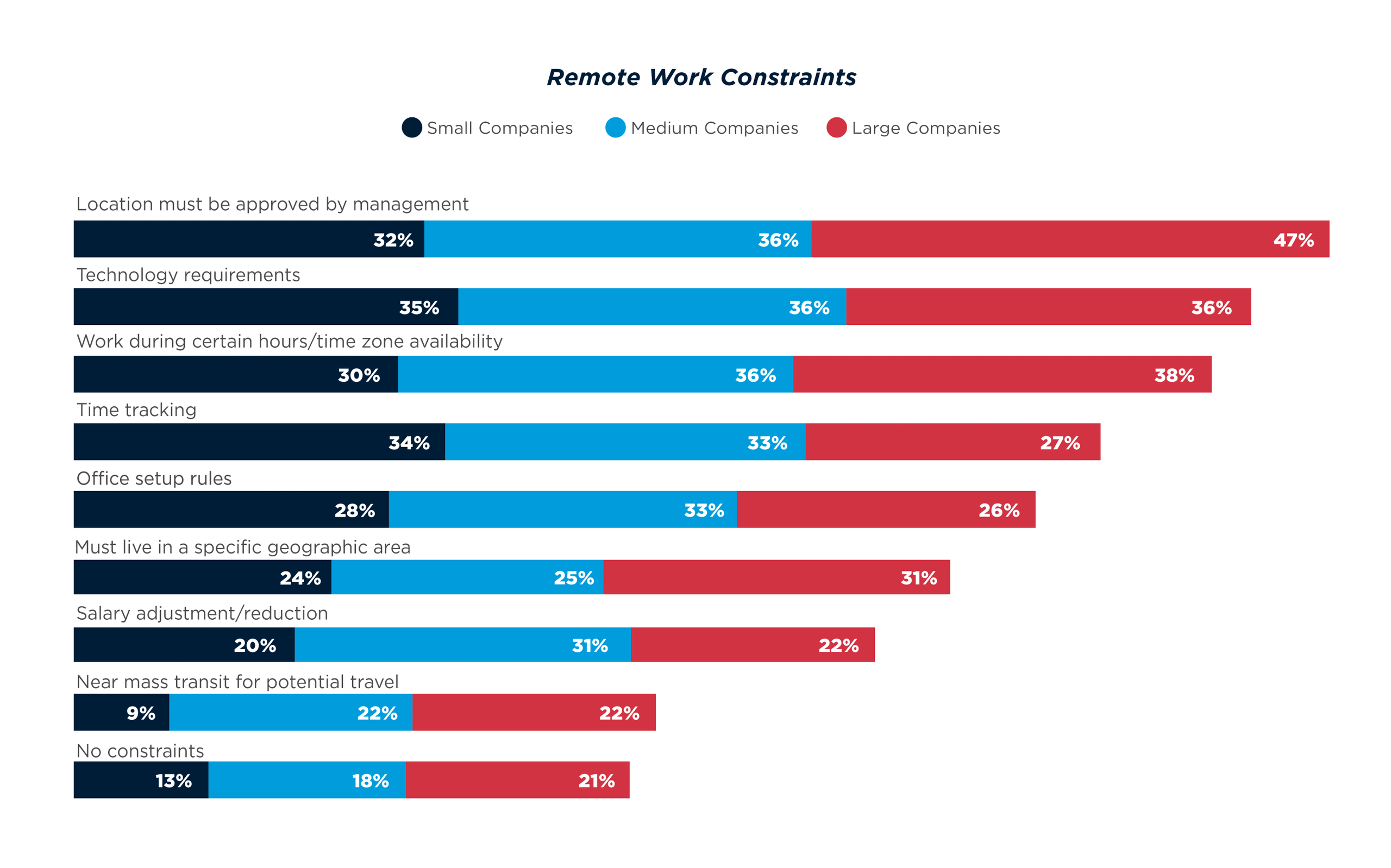
Office Space
Though hybrid work is still the most prevalent workplace model overall of the companies surveyed, very few (8%) respondents noted a decrease in 2023 of their total office space. Most respondents either increased their total office space in 2023 (52%) or made no changes to the amount of space (40%).When it comes to actions taken within the office space, 30% of respondents note renovating, 28% note offering incentives to employees to return to the office such as free lunch, and 26% note increasing shared/communal space in the office. The predominant actions vary by company size with large companies noting renovations (34%) or exploring office downsizing (30%), medium companies noting renovations (32%) or incentivizing employees to return (30%), and small companies noting exploration of the office relocating to another city (23%) or purchase of additional office space (23%).
